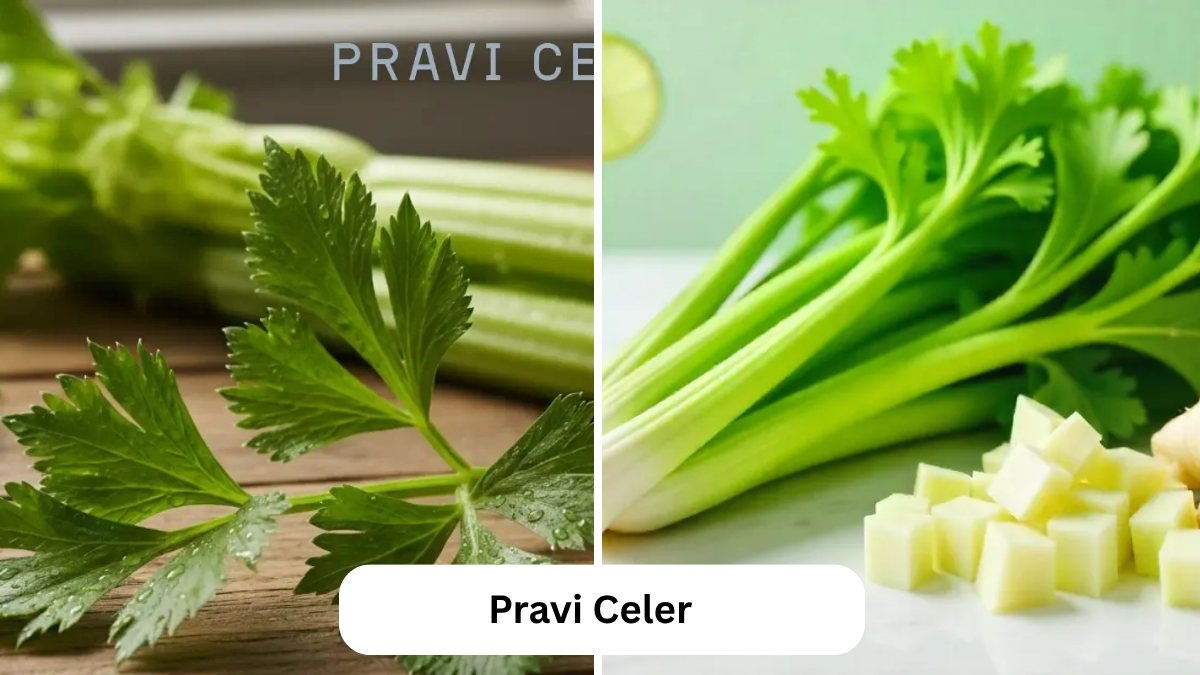Pravi celer is known as a versatile vegetable that holds a special place in kitchens, gardens, and traditional health practices. The term “pravi celer” commonly refers to what many know as true celery, a plant recognized for its crisp texture, earthy flavor, and numerous nutritional benefits. It is used in soups, salads, stews, sauces, and raw dishes, making it a staple ingredient in many cultures. Beyond its culinary applications, pravi celer has a long history of being used in natural remedies due to its vitamins, minerals, and health-supporting compounds. To understand pravi celer fully, it is essential to explore its origins, nutritional value, cultural significance, growing conditions, and the role it plays in promoting health and wellness.
The Origins and Background of Pravi Celer
Pravi celer as a cultivated plant has ancient roots. Historical evidence suggests that celery was used in the Mediterranean region thousands of years ago. It was initially valued more for its medicinal properties than its taste, and it played a role in early religious rituals and healing traditions. Over time, cultivation practices developed, and pravi celer became appreciated not only for its potential health benefits but also for its unique flavor. Eventually, the plant spread to other regions, including parts of Europe, where it became an essential ingredient in daily cooking. The term pravi celer, meaning true celery, distinguishes this particular form of the plant from other related varieties, such as celeriac, which is grown for its root. By focusing on the leafy stalk form, pravi celer has become the version most associated with everyday meals and familiar kitchen use.
The Characteristics of Pravi Celer
Pravi celer is easily identified by its long, crunchy green stalks and fragrant leaves. The plant thrives in temperate climates and prefers rich, moist soil. It has a delicate balance of crisp texture and slightly peppery taste, making it unique among vegetables. The flavor can vary depending on how and where it is grown, but generally, pravi celer offers a refreshing and aromatic quality. The leaves, while sometimes overlooked, are often used to enhance soups and sauces due to their concentrated flavor. The entire plant can be consumed, demonstrating its efficiency and versatility. Its appearance and flavor profile make pravi celer a foundation ingredient in classic stocks, broths, and seasoning bases such as the well-known mirepoix used in French cuisine.
Nutritional Value of Pravi Celer
One of the reasons pravi celer is so widely valued is due to its rich nutritional content. The vegetable is low in calories, making it a popular choice for those seeking healthy, balanced meal options. It is known to contain high levels of vitamin K, essential for bone health and blood function. It also provides vitamin A, vitamin C, folate, and several antioxidants. Pravi celer contains dietary fiber, which supports digestive health, helping to regulate the digestive system and prevent irritation. Additionally, its high water content aids hydration and supports overall bodily balance. Because pravi celer is nutrient-dense and low in sugars and fats, it is commonly recommended as part of a healthy diet, especially for individuals focusing on weight management or heart health.
Pravi Celer in Culinary Traditions
Culinary traditions around the world use pravi celer in a wide range of dishes. In many cuisines, it is considered a foundational flavoring ingredient, used to create base layers of taste in soups, sauces, and stews. Its crisp texture adds freshness to salads, and it pairs well with fruits, meats, grains, and legumes. In Mediterranean cooking, pravi celer is commonly sautéed with onions and carrots to form a cooking base that enhances the flavor of the dish. It is also enjoyed raw with dips, incorporated into sandwiches, or used as a garnish. The versatility of pravi celer allows it to be used in both simple everyday meals and more elaborate culinary creations. Its ability to enhance other ingredients without overwhelming them makes it a valuable addition to the kitchen.
Traditional Uses of Pravi Celer in Health Practices
For generations, pravi celer has been used in natural health traditions as a supportive ingredient for overall wellness. Its high levels of antioxidants and anti-inflammatory properties have led individuals to use it as a cleansing food. Some traditional practices suggest consuming pravi celer juice to support hydration, calm digestion, and encourage natural detoxification processes. While scientific research continues to explore these claims, many individuals report feeling benefits from including pravi celer as part of their daily diet. Its gentle nature makes it suitable for individuals seeking natural ways to promote health without the use of strong or artificial treatments. However, like any food, its effectiveness is most noticeable when combined with balanced nutrition and healthy lifestyle habits.
Growing and Harvesting Pravi Celer
Growing pravi celer requires patience and consistent care. The plant thrives in environments where temperatures remain mild and soil remains consistently moist. Gardeners often start pravi celer from seeds indoors before transplanting the young plants into the garden. Because of its long growing season, it benefits from early starts and steady watering. Proper spacing ensures the stalks grow strong and tall. Harvesting usually involves cutting the stalks near the soil line once they have reached the desired size. The flavor of pravi celer can vary based on when it is harvested and the soil conditions, meaning that growing it at home can produce a more personalized taste experience. Many gardeners enjoy cultivating pravi celer not only for its flavor but also for the satisfaction of growing a useful and nutritious plant.
The Cultural Significance of Pravi Celer
In many cultures, pravi celer symbolizes nourishment, renewal, and tradition. It is often included in holiday meals, comfort dishes, and traditional family recipes. The act of preparing pravi celer, whether chopping, cooking, or seasoning, often links generations through shared practices. Culinary knowledge is passed from elders to younger cooks, and pravi celer frequently plays a role in these lessons. In some traditions, it is also believed to hold symbolic meaning related to wellness and vitality. The familiarity of pravi celer across cultures highlights its universal appeal and its importance as a bridge between culinary heritage and contemporary cooking practices.
Modern Interest in Pravi Celer
In recent years, there has been renewed interest in pravi celer due to increasing awareness of healthy eating, plant-based diets, and natural wellness. Many individuals are seeking whole foods that provide nourishment without unnecessary additives, and pravi celer fits well within this approach. Its presence in social discussions about healthy eating has grown, especially with trends involving fresh juices and raw food meals. While trends come and go, pravi celer remains consistent because its value lies in its simplicity and reliability. It does not require complicated preparation to be beneficial; even simple uses can provide enjoyment and nourishment.
Conclusion
Pravi celer is far more than just a common kitchen vegetable. It carries historical depth, nutritional strength, culinary flexibility, and cultural significance. Its refreshing flavor and health-supporting qualities make it a welcome addition to meals, while its ease of use allows it to fit comfortably into everyday cooking. The value of pravi celer is seen not only in its taste but also in its role in promoting wellness and preserving culinary traditions. Whether enjoyed raw, cooked, juiced, or blended into recipes, pravi celer remains an enduring and meaningful part of many kitchens and lifestyles. Its continued appreciation across generations reflects its importance as a nourishing, flavorful, and culturally meaningful plant.



